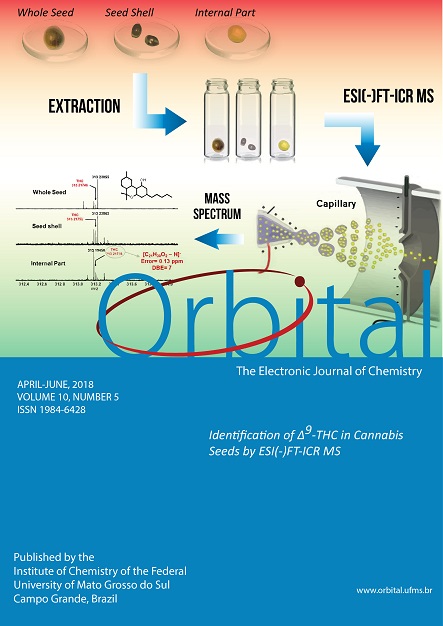- Chagas disease,
- molecular docking,
- molecular modeling,
- aromatic compound
Copyright (c) 2018 Orbital: The Electronic Journal of Chemistry

This work is licensed under a Creative Commons Attribution-NonCommercial-NoDerivatives 4.0 International License.
Abstract
Chagas disease is a parasitic tropical disease caused by Trypanosoma cruzi and transmissible to humans and other mammals by insects of the Triatominae subfamily. Due to the negligence of the pharmaceutical industry in relation to the development of new anti-drugs and the existing drugs have low efficacy and many side effects, the development of new research in the area is extremely relevant. Thus, the objective of this work was to relate the biological activity of glyceraldehyde 3-phosphate dehydrogenase enzyme inhibitors with molecular descriptors such as partition coefficient (LogP), water solubility (LogS), HOMO-LUMO frontier orbitals and potential of ionization. The descriptors were calculated machine learning techniques and semi-empirical calculations using the PM7 method. A molecular coupling simulation was also performed aiming at a better understanding of the interaction of the compounds with the active site of the enzymatic target. The compounds were found to have attractive interaction energy with the enzyme and to provide adequate solubility for good pharmacokinetics. It was also observed a relation of the pharmacological activity of some compounds with the energy of the LUMO orbital.

